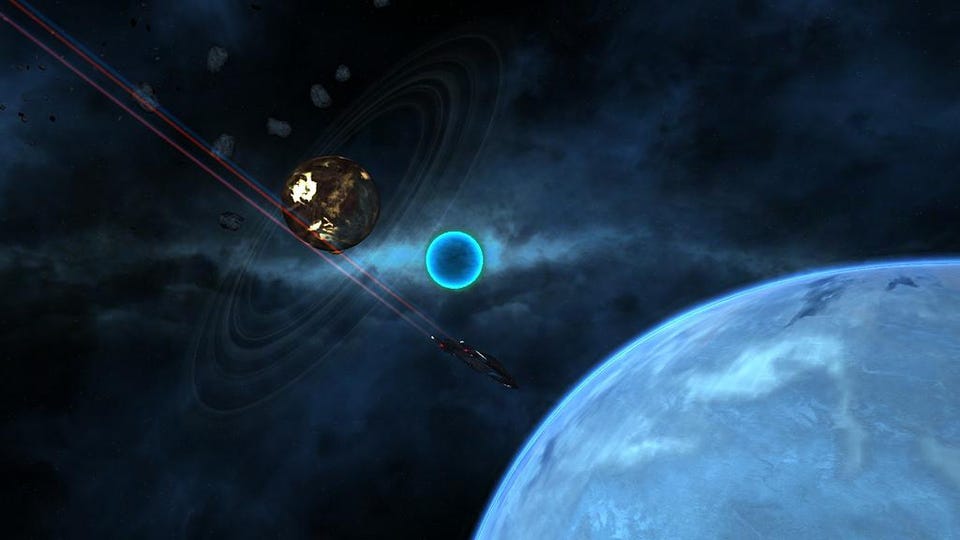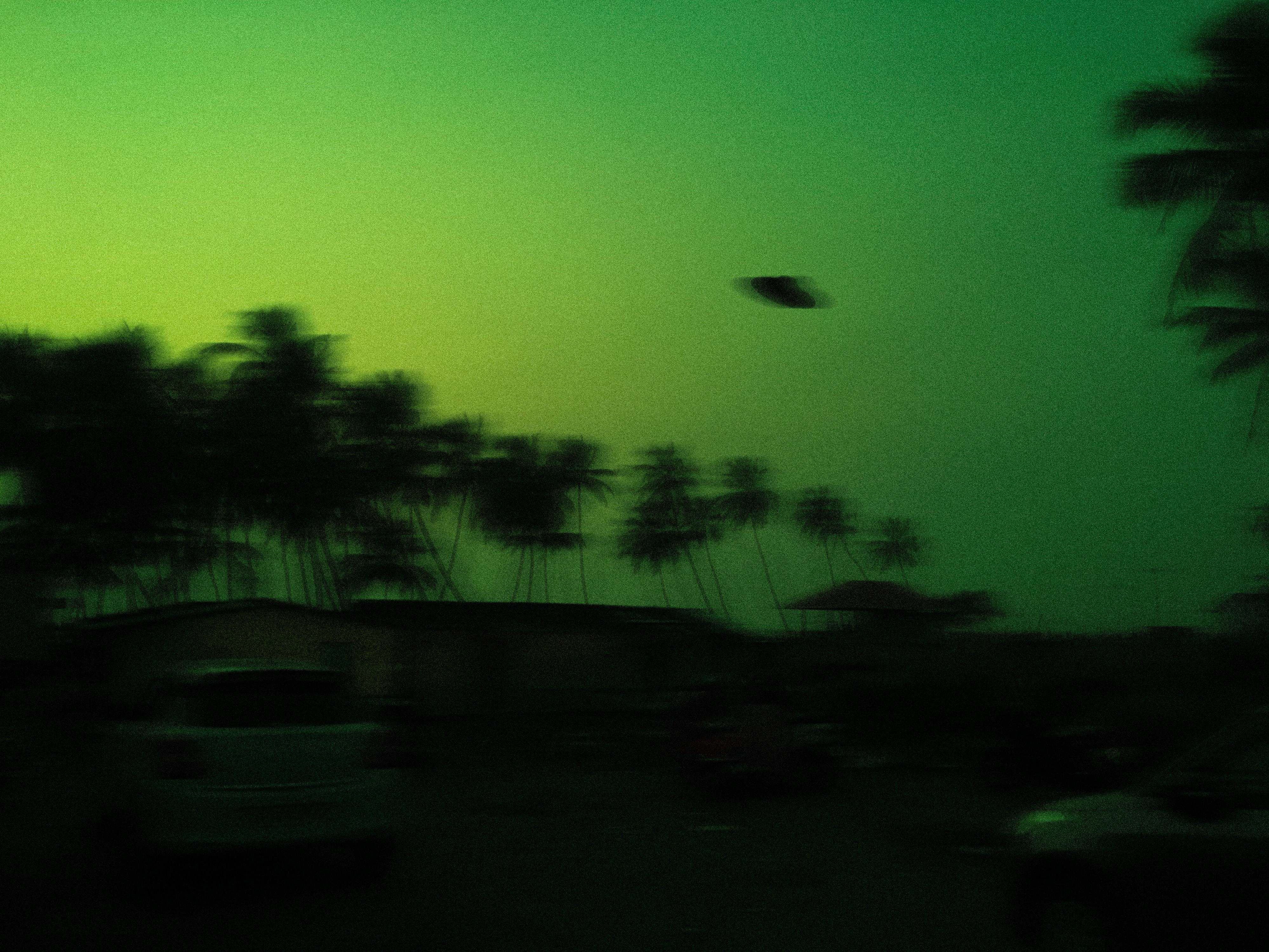Michelle Thaller: One of the biggest questions is, could there be other life besides us out there in the universe? And I think pretty much every scientist I know feels that there must be. I mean, just simply the numbers-- in our galaxy alone, there are half a trillion stars. And we're now beginning to realize that nearly every star has its own solar system. So at the very least, our single galaxy has hundreds of billions of planets. And some of the stars out there are even older than our sun.
There may have been a chance for a civilization to start billions of years before life began on earth. And if that's true, could there be alien civilizations out there that are far more advanced, technologically, than we are? The unfortunate thing, of course, is we have no evidence of this. They're not making it very obvious. So is there a way that we might be able to see some of, at least, the artifacts of one of these super-civilizations around a distant star? And one of the people who thought about this in a really wonderfully scientific way was a man named Freeman Dyson.
And his name got lent to something called a Dyson sphere. And what a Dyson sphere is-- the idea is that a very advanced civilization would probably need a lot of energy. And one of the best sources of energy is solar energy, the energy of their star that they orbit around. But instead of waiting for that starlight to come all the way to a planet, and to get put into little detectors and solar cells, what if civilization was a little bit more assertive about that, and actually went to the star and built giant collectors around that star? The idea of a Dyson sphere is probably a bit extreme, because some people wondered if a civilization could build an entire shell around a star.
And that shell would collect all of the radiation available from that star that they could use for whatever alien purposes in their super-advanced civilization. A lot of people have suggested that maybe a shell wouldn't be stable. It would be very hard to keep that actually working and orbiting around a star. So maybe you could make a giant grid of huge collectors that would orbit around the star and pick up as much radiation as possible. So a Dyson sphere, or sort of the equivalent of that, there being many, many orbiting detectors around a star, is a wonderful idea in science fiction.
The question is, is there a way you could detect one of these? And for some time, actually, people have wondered, what if you saw a lot of infrared radiation, heat radiation, coming from a star-like object, but you didn't see any visible light? Is it possible that there was a shell of material around that star used to collect all of its energy, and that shell was getting warm because it's around the star, but it wasn't letting any light through? There are very serious scientists who proposed looking for star-like objects that just have heat, but no light associated with them. Unfortunately, we never found any of those either. A couple years ago, however, something very dramatic happened. And it happened as part of the Kepler mission.
This was a mission that was looking for planets around other stars. And the way Kepler looked for planets is it basically looked at a part of the sky where you could see a couple hundred thousand stars all at once, and it just stared at that for years. The telescope never moved. It looked at the same part of the sky for a very, very long time. And then over time, scientists looked to see if the starlight varied. Over all of these stars, could each star be varying as a planet went around and made a little eclipse so that the planet has to be lined up perfectly along our line of view-- but that can happen, there's a lot of planets in many different orientations around the stars in the sky. So if what's lined up perfectly, you would see a little eclipse.
The planet would go in front of a star. You wouldn't see the planet itself, but you would notice the starlight drop. The star would get a little dimmer. So what happens if you notice that a single star in that field gets a little dimmer every three days? Every three days, there's the same little dimming that comes back around, again and again. You realize you have a planet there, a planet, in this case, that's orbiting every three days, and blocking out light. Some of the planets we found have larger orbits. We've even found planets in earth-like orbits that go around about once a year. So Kepler found thousands of planets just by looking at this one part of the sky.
Now, normally, when a planet goes in front of a star, the dip in brightness is very small, less than 1%. If you have a big planet, a planet the size of Jupiter, and maybe that planet is even very close to the star, it can go down maybe a couple percent. The actual effect is relatively small. Stars are much larger and much brighter than any planet going around them. So the dip is just a little dip. And so imagine people's surprise a couple of years ago when one of the stars seemed to be going through very dramatic dips in brightness, as much as 25%.
Now, the only thing that could block out 25% of the light of a star is something as big as another star, and then we would see another star going around, and that wasn't there. We'd never seen anything like that before. And interestingly enough, this was something done by what we call a citizen scientist. There are people in the public who are not trained scientists who actually help NASA. They kind of comb through our data. And they have no training. It's almost kind of like a video game format. They actually help us go through the data, and then they sort of flag things that are interesting. We obviously have computer programs that look for these variations in starlight. And the computer programs find 99% of everything that we're looking for.
But sometimes there's a weird result, something that doesn't match the computer algorithm, and the computer throws it out. And that's what happened with this star. It was such a dramatic dip that it couldn't have been real. And not only that, the dip was not symmetric. When you have a little ball, a little planet go in front of a star, the dip is nice and symmetric. It's a nice, even, circular shape that goes in front of the star. This was very weirdly shaped, almost as if giant triangles were moving across the surface of the star. So scientists did not immediately jump to the conclusion that, hey, maybe these are giant alien solar collectors. But in the paper that was actually published-- the first author was it was Tabetha Boyajian-- they noted that if there were something like a Dyson sphere, it might look something like this.
And of course the press grabbed that, and it exploded, and people wondered, could we really have found evidence of a super-civilization around the star. And actually, even myself-- this star is about 60 light years away, and is visible through a small telescope. It's not a particularly bright star, but you can see it through a small telescope. And I wondered if we could actually prove that this was artificial. You could go out in your backyard at night, put a telescope in the sky, and see this little point of light, and know that there was something wonderful, amazing, a super-civilization around that star. It gave me goosebumps. Of course we wanted to follow up and find out what this really was. Could this really be giant solar collectors orbiting around a star? Well, the unfortunate thing is, after a lot of follow-up and looking at it in many different wavelengths of light, there was a relatively simple finding that whatever this was made out of dust. It actually bends different wavelengths of light, different colors, differently, very much the same way that sunlight is reddened in a sunset.
As it actually goes down through the air, blue light is scattered away, the red light is left, and you have a beautiful orange or red sunset. And so whatever this is is made out of dust. Unless aliens are particularly good at making giant solar collectors out of particles that are less than a millionth of a meter across, that's not an alien civilization. Instead, we have a new mystery-- what is this? There's a giant, opaque, thick dust cloud around this star, and it's very uneven. And people wonder if maybe two planets have recently collided. Maybe two planets collided and threw up this giant cloud of dust that's still kind of settling down. Maybe that's what we're looking at. We're not really sure. But one of the things that I think is really telling about this is I often get the question, would you hide evidence of a civilization? Say that we had alien bodies or a UFO, or we'd found signals from space, would scientists hide that from the public?
And instead, I think what you saw were scientists jumping up and down, saying, oh my God, what if this is really something very interesting? We even called our colleagues at SETI, the Search for Extraterrestrial Intelligence, which is an organization that actually looks for radio signals around the sky that could be artificially produced. And we asked them to look at the star. They didn't see anything. So while this one did not turn out to be an alien civilization, and in fact, we don't have any evidence of aliens yet, we love the idea that there could be life out there. As scientists, this excites us. It inspires us. And immediately, even before we knew whether it was true or not, we were wondering if it could be a possibility. There is no way we would ever hide it. And not only that, but the sky is open to everyone.
There's no single country that can actually just-- you're the only people that get to point a telescope up at the sky. There's no way people could ever be organized enough to actually hide something like this. And as soon as we thought something unusual was happening, we followed up. We wanted to know more about it. So OK, no super-civilizations yet, but maybe, someday, we will really get a signal or see something up there that has to be artificial. And then I will be in my backyard with that telescope, looking up with goosebumps.




